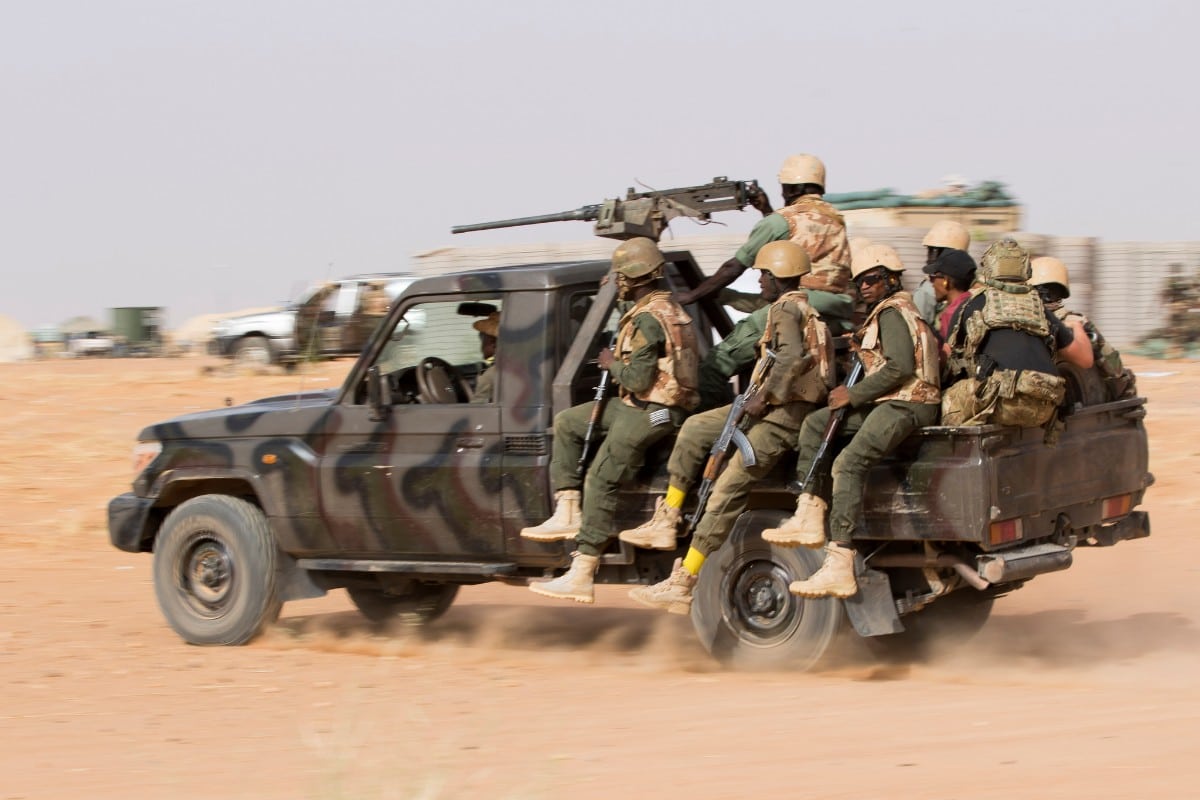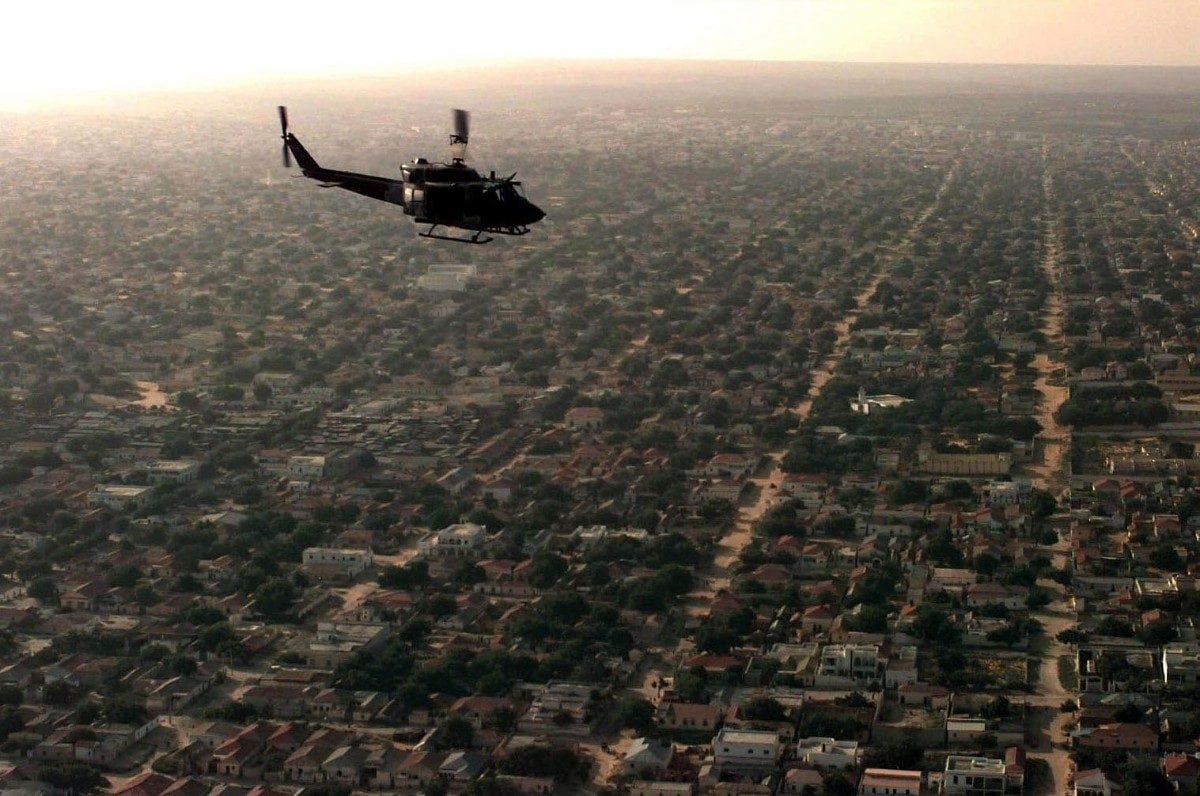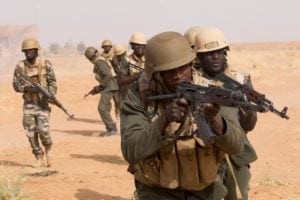 R. Bumgardner | https://www.flickr.com/photos/africom/39773422980/
R. Bumgardner | https://www.flickr.com/photos/africom/39773422980/
“On Their Ten Yard Line Not Ours:” The American Shadow War in the Sahel
On Sunday, as African heads of state and foreign ministers gathered for the thirty-first African Union Summit, one topic on the agenda loomed larger than the rest: the increasing threat that terrorism poses to many African states. In the week leading up to the summit alone, extremist groups perpetrated several attacks in countries in the Sahel region, including two claimed by al-Qaeda that targeted French-backed anti-terror forces. As the terror threat continues to grow – Morocco’s Foreign Minister told U.S. officials that the number of al-Qaeda and ISIL aligned extremists in Africa exceeds ten thousand – the U.S. has grown its presence in Africa as well. However, before entrenching too deeply in another front in the war on terror, American policymakers should remember previous military endeavors in Africa and heed the lessons they teach.
On March 26, 1994, after almost two years in Somalia, U.S. troops concluded a mission that ended in stark contrast to its name: Operation Restore Hope – conceived in 1992 to help the UN provide humanitarian aid to those suffering in the Somali famine – had, by mid-1993, become an armed conflict between insurgent Somalian warlords and UN and U.S. forces. By the end of that year, forty-three American servicemembers had been killed – eighteen in the infamous “Black Hawk Down” battle of Mogadishu. “Most people don’t understand,” said Lieutenant Colonel Raoul Archambault, who commanded forces in Somalia, “This was the Wild West or pretty close to it. Disarmament was an impossibility.” The fight, which had begun on America’s terms, had ended on the warlords’. This was something national security officials wanted to make sure never happened again.

A U.S. Marine helicopter conducts a patrol over Mogadishu during Operation Restore Hope. Photo by: Expert Infantry on Flickr
To accomplish that, the U.S. has prosecuted post-Somalia conflict – namely the war on terror –mostly through pre-emptive action. From Afghanistan to Iraq to Syria, American military efforts have been focused on, in the words of former Defense Secretary Robert Gates, going after “violent extremists ‘on their ten yard line and not ours.’”[1] This is exactly what U.S. special forces are doing in the Sahel now.
While names like Boko Haram and Al-Shabaab are recognizable in the U.S., until recently, the American public was largely unaware that military action was being taken in Africa to combat these groups. In October 2017 however, after four green berets were killed during a counterterrorism operation in Niger, details began to emerge illustrating an American “shadow war” with just that purpose. Authorized under U.S. Code section 127e, which gives the Defense Secretary a broad mandate to deploy special operations forces overseas to combat terrorism, U.S. fighters have been involved in raids against terrorist groups in multiple African countries for at least ten years.
Defense Department reports suggest that the impetus for these missions is grave: “Africa’s challenges could create a threat that surpasses the threat that the United States currently faces from conflict in Afghanistan, Iraq, and Syria.” These challenges are particularly present in the Sahel, where an abundance of weapons, coupled with little government-control and climate-change driven scarcity of resources have bred fertile ground for extremism. As such, in addition to homegrown African terror groups, ISIL and al-Qaeda inspired and allied groups are proliferating on the continent.

Nigerien soldiers practice vehicle contact movements while participating in a special forces training exercise during Exercise Flintlock 2018 in Agadez, Niger, April 18, 2018. Photo by: Richard Bumgardner on Flickr
The risks ISIL and al-Qaeda pose in Africa should not be understated. Following ISIL’s string of defeats last year, the group has become a “virtual caliphate” looking for new physical territory to occupy. Given the Sahel’s instability, the region could very well provide this.
Evidence for this exists in previous places where extremism has taken hold. In Afghanistan, al-Qaeda developed as an organization during instability caused by the Soviet-Afghan war, and grew in power after the 2001 U.S. invasion. In Iraq and Syria, ISIL was incepted during the 2003 U.S. invasion of Iraq, then strengthened by the Syrian civil war, both of which caused significant instability.
The increasing number of terror groups in Africa is a national security concern for the U.S. and an existential problem for many African countries. Key to solving it is understanding and addressing the circumstances that underlie the ability of such groups to develop in places like the Sahel. Dr. Haroro Ingram of George Washington University’s Program on Extremism, speaking at a panel on ISIL’s revival strategy, echoes this: “For locals, ISIL is often a symptom, of big and brutal problems.” While military action is necessary to combat extremists that threaten the safety and security of a people, it is also necessary to remember Lt. Col. Archambault’s concluding thoughts leaving Somalia in 1994: “You can’t solve social problems with a military force.”
[1] Gates, Robert. Duty: Memoirs of a Secretary at War (New York: Knopf, 2014).





